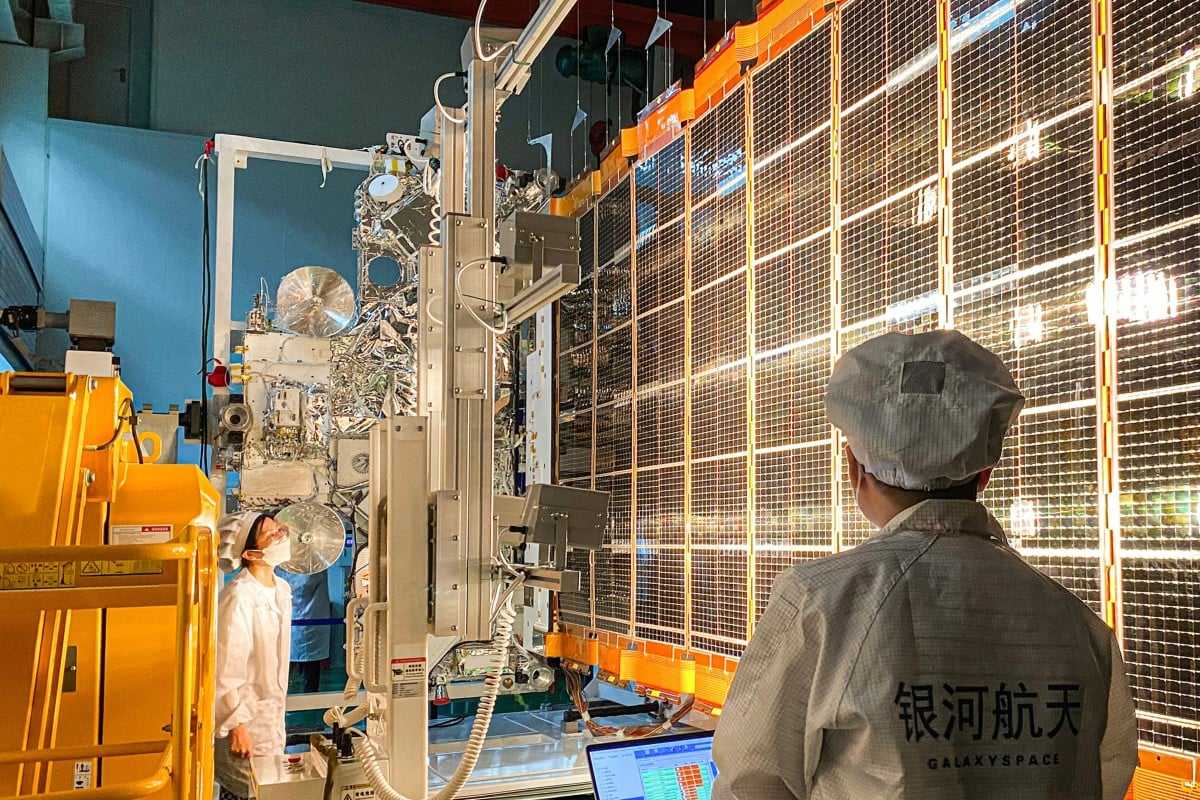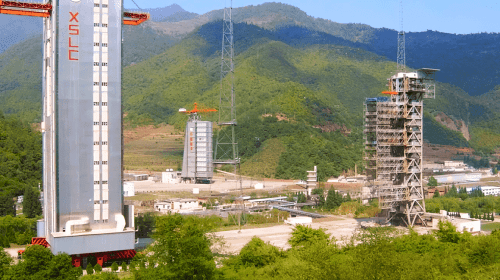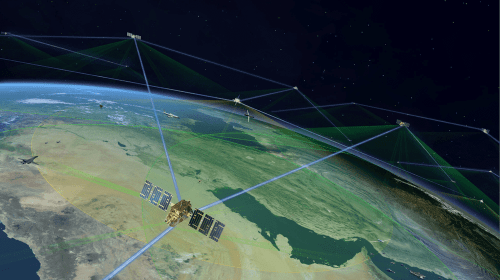Revolutionary Satellites Enable Direct Mobile Phone Connectivity
Dec 06, 2023
Beijing-based private space company GalaxySpace has embarked on an innovative satellite project — a flat, unfoldable spacecraft that allows direct mobile phone connectivity to orbiting networks. Still, in early development, the unique design aims to provide high-throughput broadband services through large phased array antennas integrated with solar panels.
 The Lingxi 03 is a plate-shaped communication satellite. Photo: Weibo
The Lingxi 03 is a plate-shaped communication satellite. Photo: Weibo
According to company founder and chairman Xu Ming, the plate-shaped satellites will resemble flat boxes on the ground. But once deployed in space, they will unfurl solar arrays and antennas in multiple directions like wings. Engineers are working on the advanced tech needed to enable such thin, foldable structures.
The expansive solar panel and antenna surface area mean the spacecraft can generate substantial power while enabling strong signal transmission capabilities. This would support ultra-fast internet speeds for users connecting their mobile devices directly to the satellite network. “Once networked, the satellites will support broadband internet service through a direct connection between users’ mobile phones and the space-based system,” Xu detailed at a recent industry event.
The new satellite concept builds on GalaxySpace’s design with Lingxi 03 – China’s first communications satellite with flexible solar arrays launched in July 2022. That early test model validated technologies like high-throughput data links, large power systems, thermal control, and deployable structures that will feed into the plate satellites. Lingxi 03 operates in low Earth orbit with a next-gen broadband payload providing tens of Gbps connectivity. Its ultrathin solar wing uses layers just 1 mm thick that fold into a compact 5 cm stack inside the launch vehicle. This pioneering structure with foldable solar cells and antennas will be taken to the next level for the new mobile-linked satellite fleet GalaxySpace envisions.
The company still faces engineering challenges around integrating phased array antennas, power systems, and other components into the limited space within the folding panels. But GalaxySpace expects its multidisciplinary team of satellite experts to provide up solutions as they advance the design.
If successfully developed as planned, the uniquely adaptable satellites would provide distinct advantages over traditional spacecraft with fixed solar arrays and antennas. Being packable into a small launch configuration enables lower-cost rides to space on existing rockets before unfurling vast collection areas once in orbit. The expanded surface connectivity will allow each satellite to link with more users and support bandwidth-intensive applications.
As the private space ecosystem grows globally, concepts like GalaxySpace’s flat satellites highlight the innovation emerging across the supply chain. The company built on earlier governmental and university projects to create the flexible solar array approach. They are now evolving the basic premise toward spacecraft that fundamentally break the satellite mold for radically improved performance. If achieved, it promises a new generation of highly capable orbital networks that can deliver data straight to the end-user handsets, realizing the promise of space-based mobile broadband.
GalaxySpace is a Chinese satellite company founded in 2016. It is known for its development of low Earth orbit (LEO) satellite constellations for global connectivity. The company aims to provide high-speed, low-latency internet access worldwide through its satellite network. GalaxySpace focuses on advancing space technology and exploring innovative solutions for satellite communication.





